
|
Astronomy Picture Of the Day (APOD)
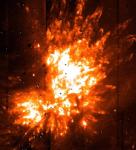 The Kleinmann Low Nebula
The Kleinmann Low Nebula
2.03.1999
The most active part of the Orion Nebular Cloud Complex is an area known as the Kleinmann-Low Nebula. There, a cluster of young and forming stars is embedded in a molecular cloud filled with dust.
 Reflection Nebula NGC 1435
Reflection Nebula NGC 1435
1.03.1999
Reflection nebulae reflect light from a nearby star. Many small carbon grains in the nebula reflect the light. The blue color typical of reflection nebula is caused by blue light being more efficiently scattered by the carbon dust than red light.
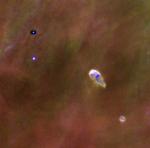 Trapezium: Teardrops in My Skies
Trapezium: Teardrops in My Skies
28.02.1999
Sometimes the unexpected comes in a familiar shape. In this picture, the seemingly familiar teardrop-shaped object just right of center is actually an unusually situated disk of gas and dust. In fact, the teardrop is about the size of our own Solar System and is racing against time to condense and form planets.
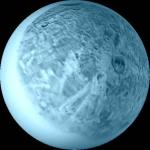 Hamlet of Oberon
Hamlet of Oberon
27.02.1999
What's in a name? Since 1919, the International Astronomical Union has been charged with the task of establishing "conventional" nomenclature for planets, satellites, and surface features. For the remote Uranian system of moons, namesakes from Shakespearean works have been chosen.
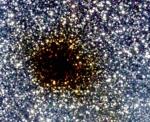 Dark Cloud
Dark Cloud
26.02.1999
Ominously foreshadowing events to come, a dark cloud of obscuring dust stands out against a luminous star field in the Milky Way. Cataloged as Feitzinger and Stuwe object "1-457" this fuliginous interstellar nebula is relatively close - possibly only 1,000 light-years distant.
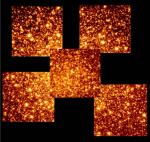 NGC 6712: Galactic Globular Cluster
NGC 6712: Galactic Globular Cluster
25.02.1999
Following orbits which loop high above the galactic plane, globular star clusters are probably 12 to 14 billion years old - truly ancient denizens of our Milky Way Galaxy. After analyzing these new ESO/VLT images...
24.02.1999
Most bright stars in our Milky Way Galaxy reside in a disk. Since our Sun also resides in this disk, these stars appear to us as a diffuse band that circles the sky. The above panorama of a southern band of the Milky Way's disk was taken from Australia.
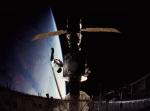 Construction of International Space Station Begins
Construction of International Space Station Begins
23.02.1999
Move over Mir, here comes the International Space Station. In December 1998, the crew of Space Shuttle Endeavour started construction by joining the U.S.-built Unity node with the Russian-built Zarya module. A close look at the above IMAX(r) photograph will reveal two astronauts working on Unity.
 NGC 1316: After Galaxies Collide
NGC 1316: After Galaxies Collide
22.02.1999
Astronomers turn detectives when trying to figure out the cause of unusual sites like NGC 1316. A preliminary inspection indicates that NGC 1316 is an enormous elliptical galaxy that started devouring a smaller spiral galaxy neighbor about 100 million years ago. Supporting evidence includes the dark dust lanes uniquely indicative of a spiral.
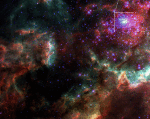 In the Center of 30 Doradus
In the Center of 30 Doradus
21.02.1999
In the center of 30 Doradus lies a huge cluster of the largest, hottest, most massive stars known. The center of this cluster, known as R136, is boxed in the upper right portion of the above picture.
|
January February March April May June July August September October November December |
|||||||||||||||||||||||||||||||||||||||||||||||||